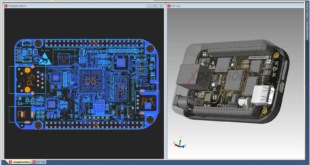As the Military and civilian technological systems, from fighter aircraft to networked household appliances, are becoming ever more dependent upon internet, they are also becoming more vulnerable to hackers and electronic intruders. Electronic system security has become an increasingly critical area of concern for the DoD and the broader U.S. …
Read More »China’s rapidly growing IoT market driving smart cities and industrial automation, becoming a global leader
The Fourth Industrial Revolution describes a dramatic step change in all of our lives. The confluence of high internet speeds, big data, the Internet of Things (IoT), analytics and artificial intelligence (AI) will fundamentally alter the way we live and work, intelligently connecting virtually every device, making our cities smarter …
Read More »Entangling atomic clocks on orbiting satellites, will enable ultra accurate Global atomic clock network and distributing secret keys
The development of precise atomic clocks plays an increasingly important role in modern society. Shared timing information constitutes a key resource for navigation with a direct correspondence between timing accuracy and precision in applications such as the Global Positioning System. Atomic clocks are one of the most accurate time …
Read More »DARPA continuous thrust on innovative research concepts and Breakthrough Technologies for National Security
DARPA has identified some of the technical, economic and geopolitical shifts that are posing potential threats to U.S. preeminence and stability. On the technical front is increasing availability on the global market the weapons technology, biological and chemical threat capabilities, advanced microelectronics and cyber- and space-related technologies, the capability of …
Read More »Advancements in mechatronics demand ECAD-MCAD Collaboration for Co-design of Smart Products
Mechatronics, which is also called mechatronic engineering, is a multidisciplinary branch of engineering that focuses on the engineering of both electrical and mechanical systems, and also includes a combination of robotics, electronics, computer, telecommunications, systems, control, and product engineering. As technology advances over time, various subfields of engineering have succeeded …
Read More »Emerging Additive Manufacturing/3D Printing for the fabrication of magnetometers and other quantum sensors
Recent advances in the understanding and control of quantum technologies, such as those based on cold atoms, have resulted in devices with extraordinary metrological sensitivities with applications in a vast array of areas ranging from geophysical type applications to satellite independent navigation. To realise this potential outside of a lab …
Read More »Australia’s Quantum Technology Industry Roadmap provides a vision for unlocking the potential of emerging quantum technologies
Emerging quantum technology applications will present substantial opportunities for economic growth, improving productivity and creating new jobs in the coming decades. Quantum technologies – which are powered by incredible advancements in quantum physics research – could accelerate drug and materials development, enhance national security, increase productive mineral exploration and improve …
Read More »New technologies to aid Ocean search and rescue operations
Search and rescue (SAR) is the search for and provision of aid to people who are in distress or imminent danger. The general field of search and rescue includes many specialty sub-fields, typically determined by the type of terrain the search is conducted over. These include mountain rescue; ground search …
Read More »Nanotechnology based smart textiles protects against chem, bio agents and also initiate movement in response to a stimulus
Wearable electronic textiles (e-textiles) have become a focus of significant research interest due to their potential applications in sportswear, military uniforms, environmental monitoring and health care. Smart textiles are defined as textiles that can sense and react to environmental conditions or stimuli, from mechanical, thermal, magnetic, chemical, electrical, or other …
Read More »DARPA’s underminer to develop tunneling robots and concepts for underground operations for emerging tunnel Warfare
Criminals, terrorists and military have been using tunnels since long time to evade detection as surface based detection methods are ineffective underground . There has been an explosion of underground warfare in the last five years. From sophisticated cross-border Hezbollah attack tunnels discovered in northern Israel to defensive tunnels that …
Read More » International Defense Security & Technology Your trusted Source for News, Research and Analysis
International Defense Security & Technology Your trusted Source for News, Research and Analysis









